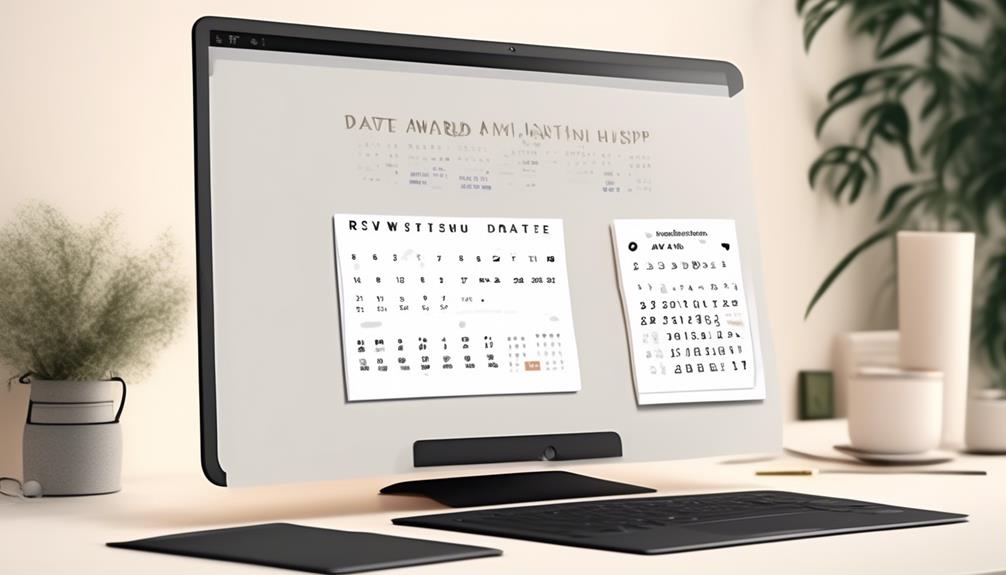We’ve all encountered the challenging scenario of needing to draft an email to a teacher regarding overdue assignments. This situation demands both delicacy and diplomatic skill.
You want to convey your genuine reasons for the delay without sounding like you're making excuses. It's a delicate balance, but fear not, we've got some tips to help navigate this tricky communication.
So, how do you approach this delicate matter without risking your reputation or academic standing?
Key Takeaways
- Recognize the impact of late submission on the professor's workload and expectations.
- Polite request for extension with genuine reasons for the delay.
- Provide context for the late submission and take full responsibility.
- Sincerely apologize for the inconvenience caused and express commitment to producing quality work within the extended deadline.
Understanding the Situation
We realize the significance of the professor's time and the impact our late submission has on their schedule and expectations. It's important to express our understanding of the situation when addressing a late assignment with a professor.
By acknowledging the lateness of the assignment, we show respect for the due date and the professor's expectations. Understanding the situation involves recognizing the effect of our actions on the professor's workload and the smooth functioning of the class.
It's essential to communicate our awareness of the inconvenience caused by our late submission. We should also convey our willingness to take responsibility for the late assignment, demonstrating our understanding of the importance of timely submissions.
When reaching out to the professor via email about the late assignment, it's crucial to express our understanding of the situation, taking into account the impact of our actions on the professor's time and the class dynamics. By doing so, we can demonstrate our respect for the professor's expectations and show our commitment to addressing the issue professionally.
Polite Request for Extension

Requesting an extension for the assignment deadline, I'm writing to respectfully ask for your consideration.
I understand the importance of meeting deadlines and take full responsibility for the delay in submitting my assignment. I sincerely apologize for any inconvenience caused and assure you that this delay doesn't reflect my usual approach to academic responsibilities.
I've encountered unforeseen circumstances, including unexpected family obligations and technical issues, which have significantly impacted my ability to complete the assignment on time.
I'm committed to producing quality work and believe that with an extension, I can submit an exceptional assignment that meets the required standards. I assure you that I'll use the additional time effectively to enhance the quality of my submission.
I value your understanding and support in this matter and am grateful for your consideration of my request. If an extension is granted, I'll devise a detailed plan to ensure the timely completion of the assignment within the new deadline.
Providing Context for Late Submission
Despite encountering unforeseen challenges, we're writing to provide context for our late submission. We understand the importance of meeting assignment deadlines and sincerely apologize for the delay. Due to unexpected circumstances, such as a family emergency or technical issues, we encountered obstacles that hindered our ability to submit the work on time. We assure you that this delay wasn't intentional, and we take full responsibility for the late submission.
We recognize the impact of late submissions on the course schedule and the need to uphold academic standards. Therefore, we're reaching out to communicate our situation and request your understanding. We're committed to maintaining our academic integrity and understand the implications of late work. In light of this, we kindly ask for your consideration in granting an extension for the assignment.
We are prepared to discuss a backup plan and are willing to provide additional details to support our request. We assure you that we've a clear plan for completing the assignment within the extended deadline. Your guidance and support in this matter are greatly appreciated, and we're dedicated to ensuring that our work meets the expected standards.
Thank you for your attention to this matter, and we look forward to your guidance on resolving this issue.
Expressing Apology

Regrettably, our submission was delayed, and we sincerely apologize for this inconvenience. We understand the importance of submitting assignments on time and take full responsibility for the delay. We acknowledge the impact of our late submission on your schedule and appreciate your understanding.
Here are some key points to consider when expressing apology in an email to your professor:
- Take full responsibility for the late submission.
- Avoid making excuses and express genuine remorse.
- Acknowledge the impact of your late submission on the professor's time and expectations.
- Clearly state your commitment to providing the best possible work within the extended deadline.
- Request an extension and offer a plan for completing the assignment within the extended timeframe.
As committed students, we want to ensure that you know we're dedicated to the course and are actively working to fulfill our responsibilities. We value your guidance and the opportunity to learn from your expertise.
Thank you for considering our request, and we assure you that this situation won't be repeated.
Closing Professionally
In closing our email, we extend our sincere appreciation for your consideration and look forward to your guidance on this matter. We understand the importance of maintaining professionalism in our communication, especially when addressing the issue of late work. Therefore, we'll conclude with a formal closing, using 'Sincerely' before including our full name at the end of the email.
Additionally, we'll provide our contact information to facilitate further correspondence if necessary. Ensuring that our email is free of any typos or errors is crucial, and we'll carefully review it before sending to uphold the highest standards of professionalism.
It's essential to avoid using casual closings such as 'Thanks' or 'Cheers' in this context, as we recognize the significance of maintaining a respectful and formal tone when addressing our teacher regarding late assignment submission.
Dear Professor, we appreciate your understanding and consideration of our situation and are committed to maintaining professionalism in our email communication regarding late work.
Frequently Asked Questions
How Do I Email My Teacher About Late Assignments?
We should email our teacher about late assignments by politely apologizing for the delay and providing a brief reason.
We can then request an extension if necessary and outline a plan for completing the assignment within the new deadline.
It's important to maintain a professional and respectful tone throughout the email and use a clear and detailed subject line to grab the teacher's attention.
How Do I Apologize to My Teacher for Late Work?
Apologizing to a teacher for late work is essential. We should express remorse and take responsibility for our actions. It's crucial to acknowledge the impact of our tardiness and assure the teacher that it won't happen again.
Being honest and showing genuine effort to make amends is key. Our goal should be to rebuild trust and demonstrate our commitment to learning and improvement.
How Do I Ask My Teacher to Accept Late Work?
We understand the importance of communicating with our teacher about late work.
It's crucial to approach the situation with respect and accountability.
We should clearly explain the reasons for the delay and express our genuine desire to submit the assignment.
Asking for an opportunity to turn in the late work demonstrates our commitment to learning and responsibility.
It's essential to be proactive in finding a solution while maintaining a respectful tone in our communication.
What Is an Excuse for Submitting Assignments Late?
Submitting assignments late can be a real headache, but it's important to provide a valid reason.
Excuses like technical issues, personal emergencies, or health problems can explain the delay.
It's crucial to communicate honestly and respectfully with the teacher.
Taking responsibility and showing a commitment to improving punctuality can help maintain a positive academic relationship.
Conclusion
We hope you'll consider our request for an extension on the late assignment.
We understand the impact of our late submission and sincerely apologize for the inconvenience.
Thank you for your understanding and we assure you that we'll complete the assignment within the extended deadline.
We appreciate your consideration and look forward to your response.










